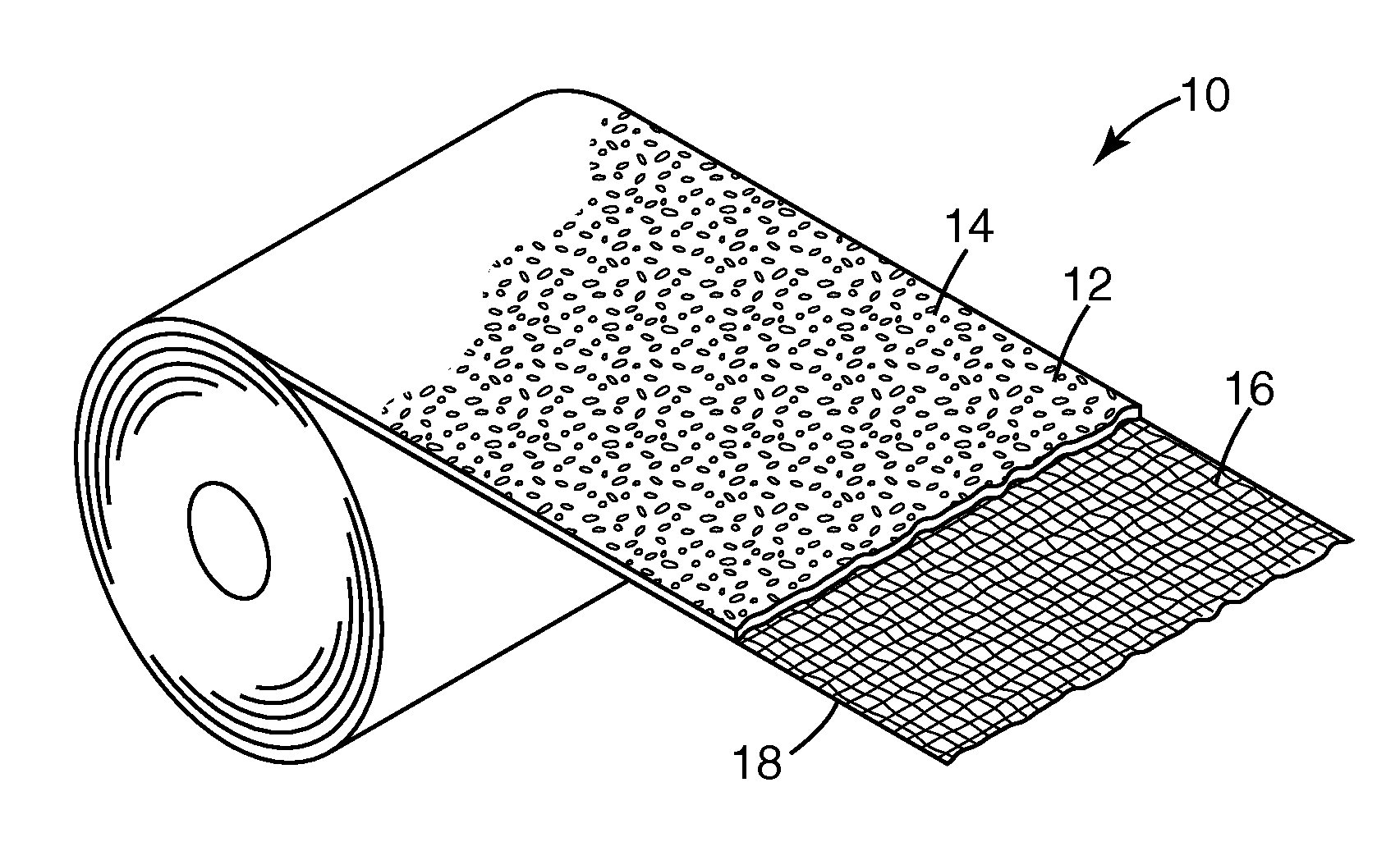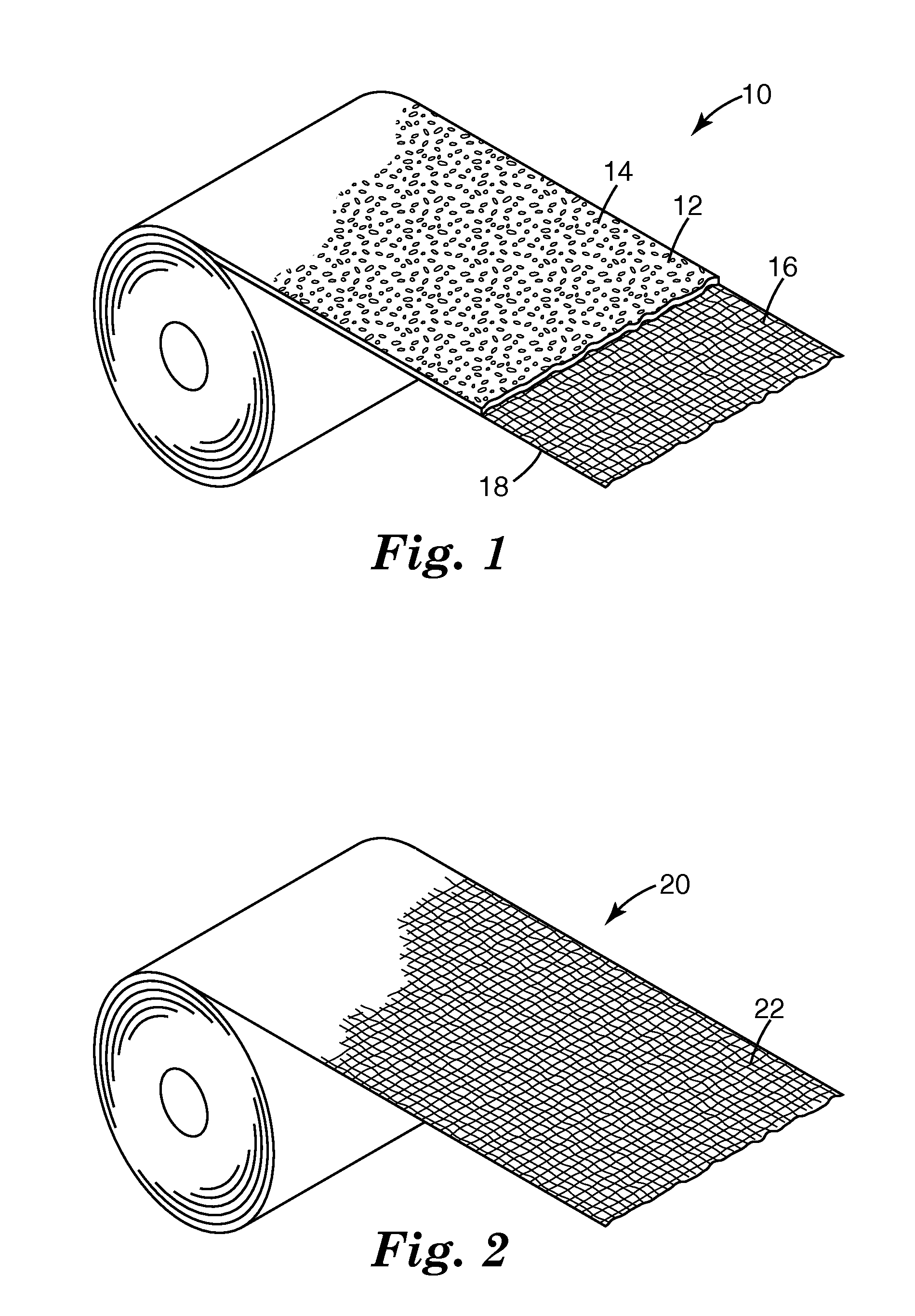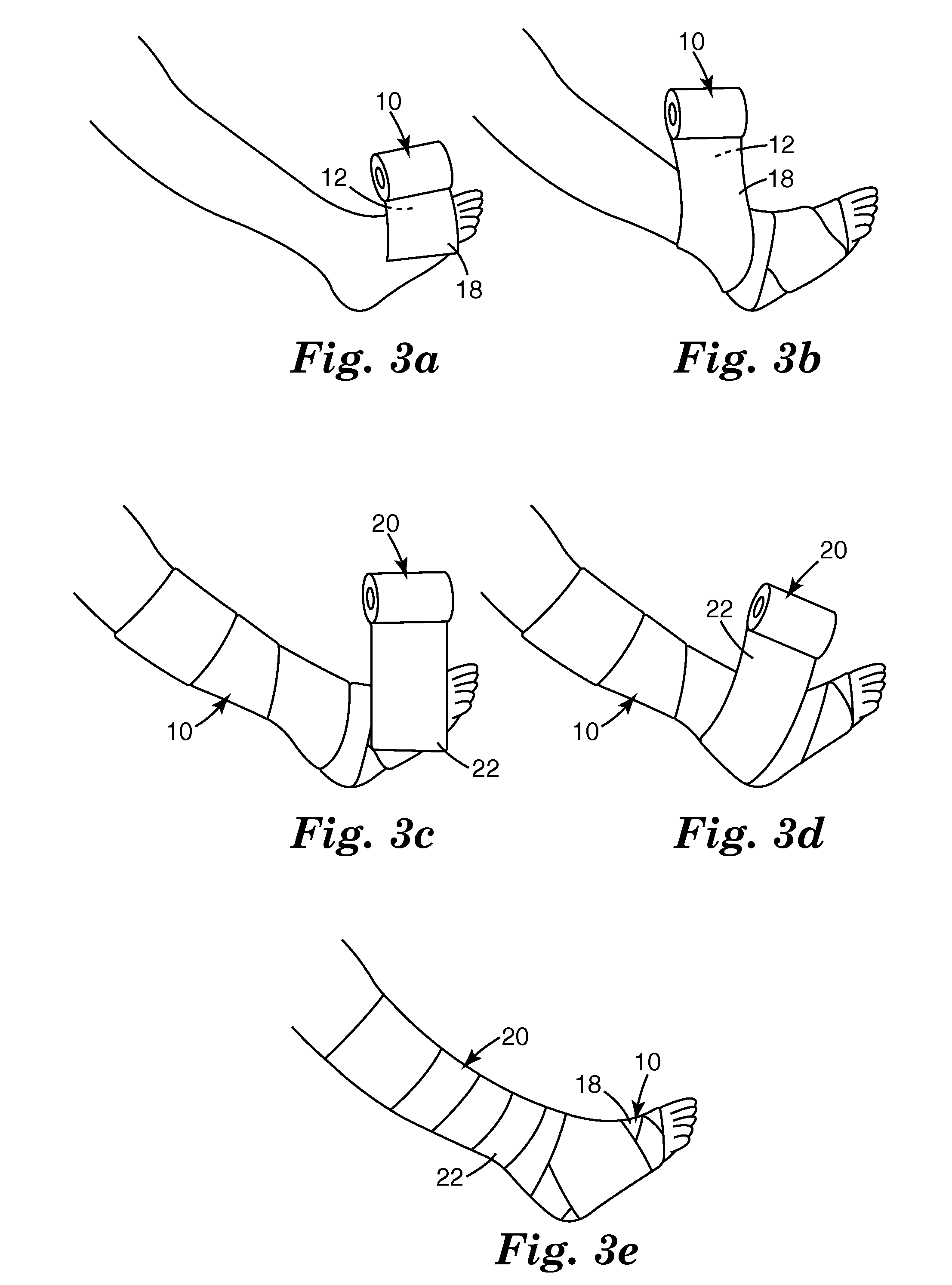Compression bandage system
a compression bandage and bandage technology, applied in the field of compression bandage systems, can solve the problems of time-consuming, difficult process of applying compression bandages, and inability to meet patient comfort, and achieve the effect of facilitating patient comfort, overall conformity, and ease of application
- Summary
- Abstract
- Description
- Claims
- Application Information
AI Technical Summary
Benefits of technology
Problems solved by technology
Method used
Image
Examples
examples
Preparation of Self-Adhering Compression Bandages for Use as an Outer Bandage
Self-adhering elastomeric bandages that do not adhere to clothing, hair or skin were prepared according to the process described in U.S. Pat. No. 4,984,584. In particular two thin dry-laid acrylic-binder-bonded nonwoven PET (1.5 denier) fibrous webs, each having a basis weight of 11 g / m2, were brought into contact with 560 denier Spandex elastic yarns, longitudinally aligned and spaced apart (either 10, 14 or 20 epi) and partially extended (the draw ratio (ratio of stretched length to relaxed length of yarn) being selected to be either about 1.5:1 or 1.75:1) to provide a composite construction with the yarns between the two nonwoven webs, which was subsequently impregnated (coating weights between 31 and 52 g / m2) with a latex based fluid binder mixture including 69% (based on fluid weight) of an aqueous anionic colloidal dispersion of 2,3 dichloro-1,3-butadiene and chloroprene copolymer (about 50% solids, 4...
PUM
| Property | Measurement | Unit |
|---|---|---|
| thickness | aaaaa | aaaaa |
| thickness | aaaaa | aaaaa |
| thickness | aaaaa | aaaaa |
Abstract
Description
Claims
Application Information
 Login to View More
Login to View More - R&D
- Intellectual Property
- Life Sciences
- Materials
- Tech Scout
- Unparalleled Data Quality
- Higher Quality Content
- 60% Fewer Hallucinations
Browse by: Latest US Patents, China's latest patents, Technical Efficacy Thesaurus, Application Domain, Technology Topic, Popular Technical Reports.
© 2025 PatSnap. All rights reserved.Legal|Privacy policy|Modern Slavery Act Transparency Statement|Sitemap|About US| Contact US: help@patsnap.com



